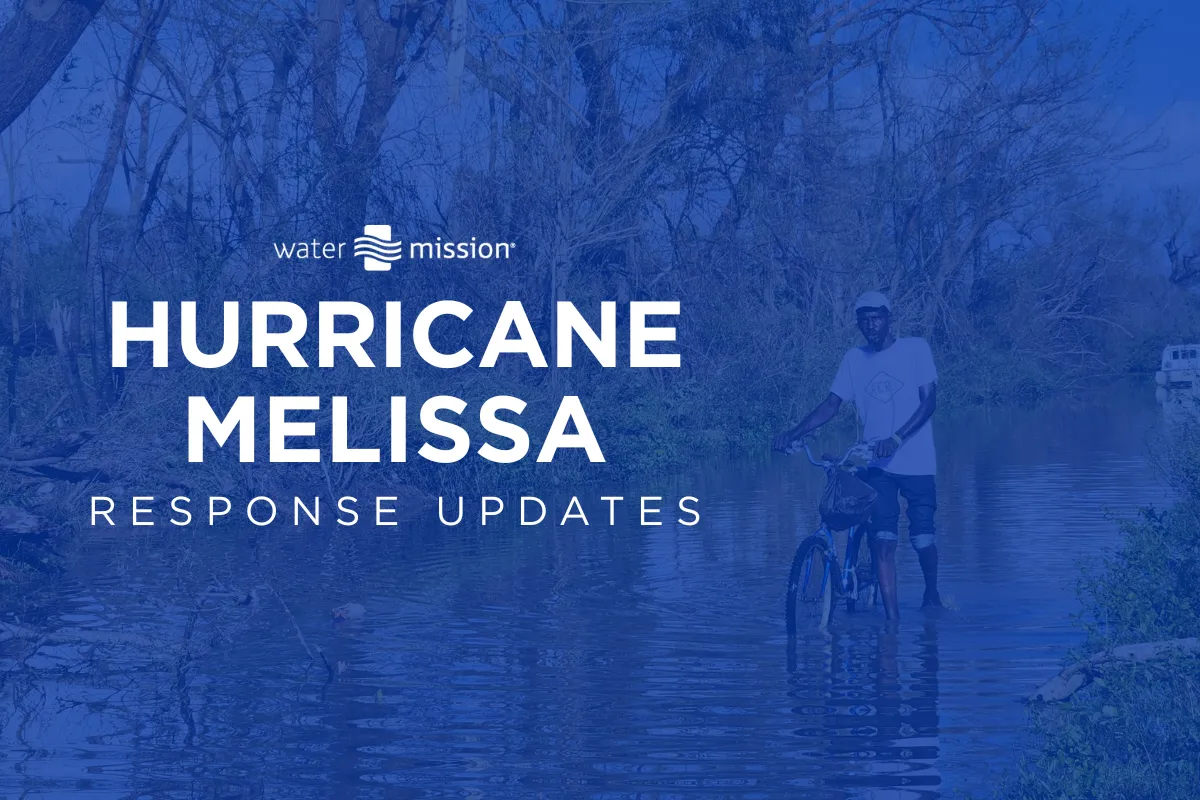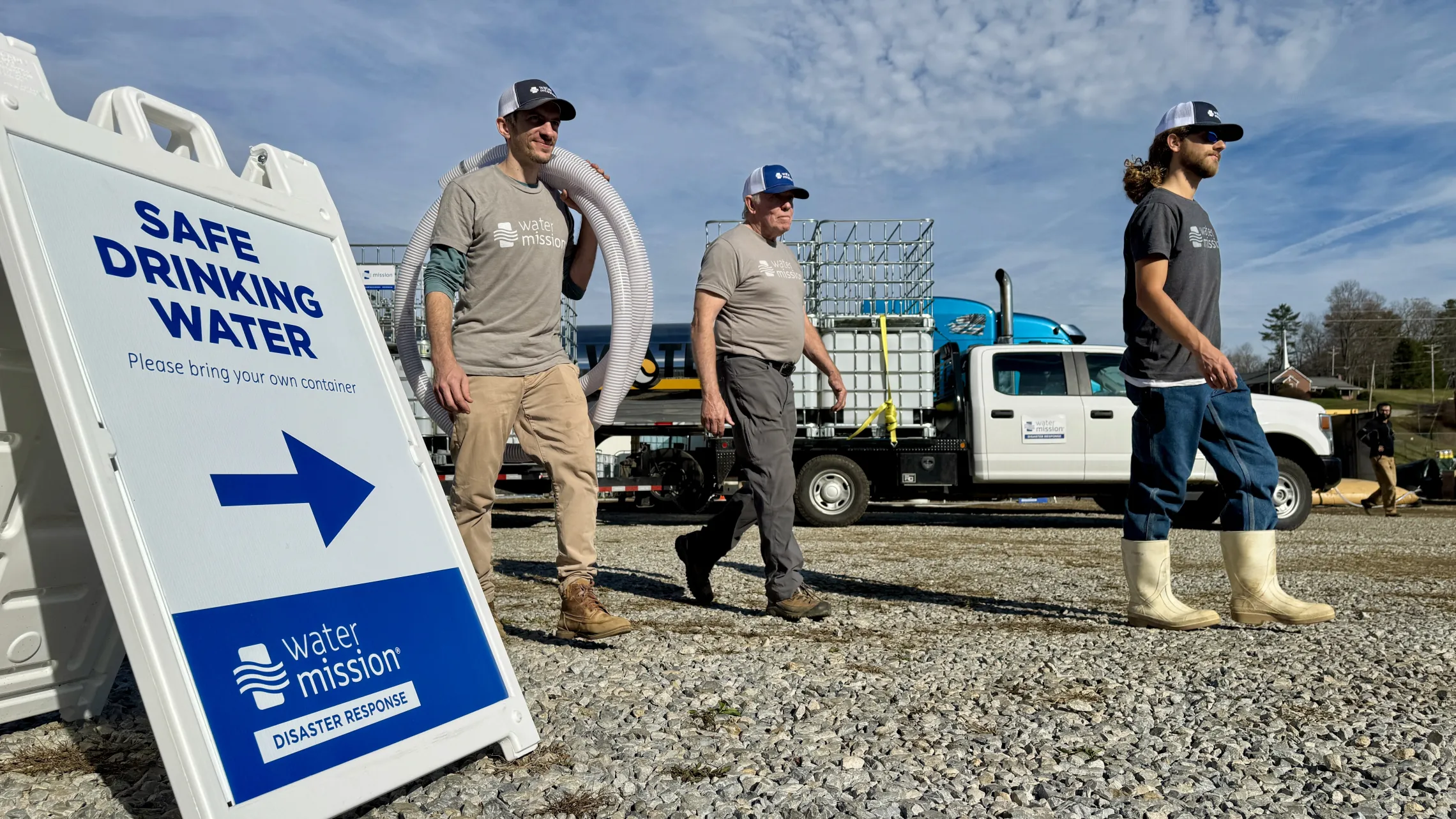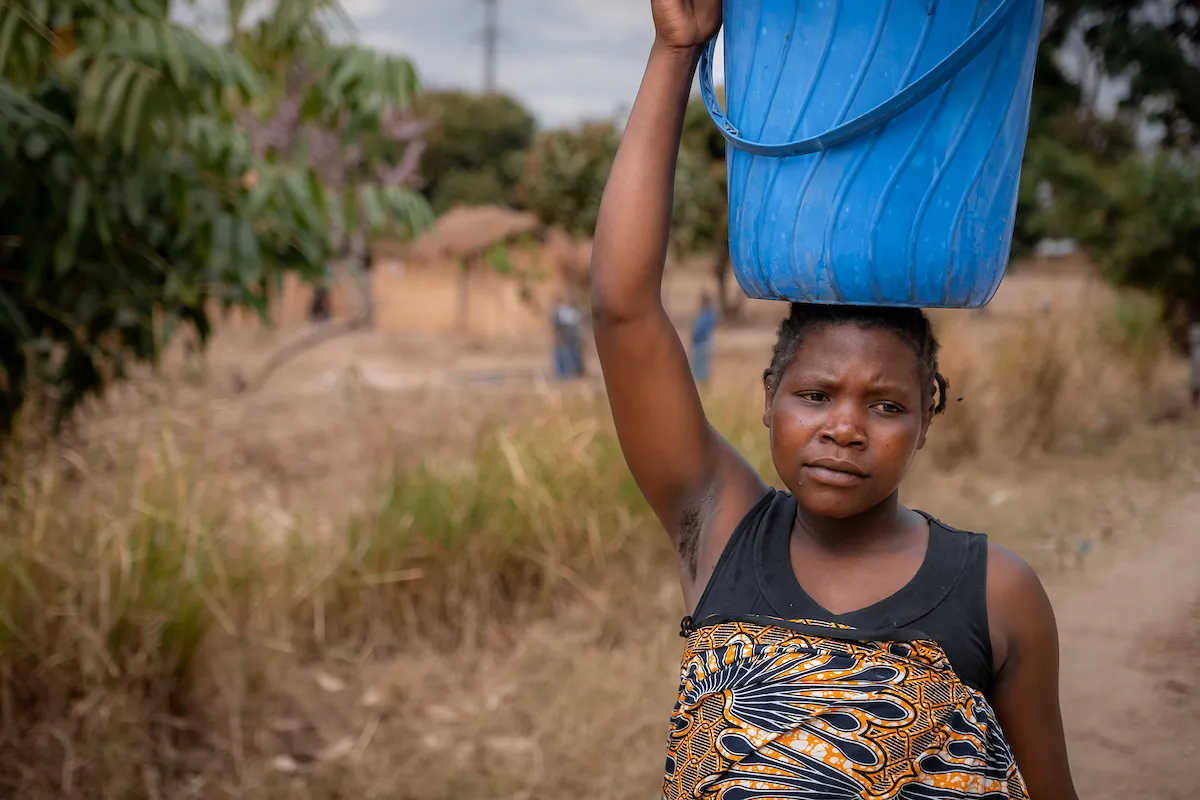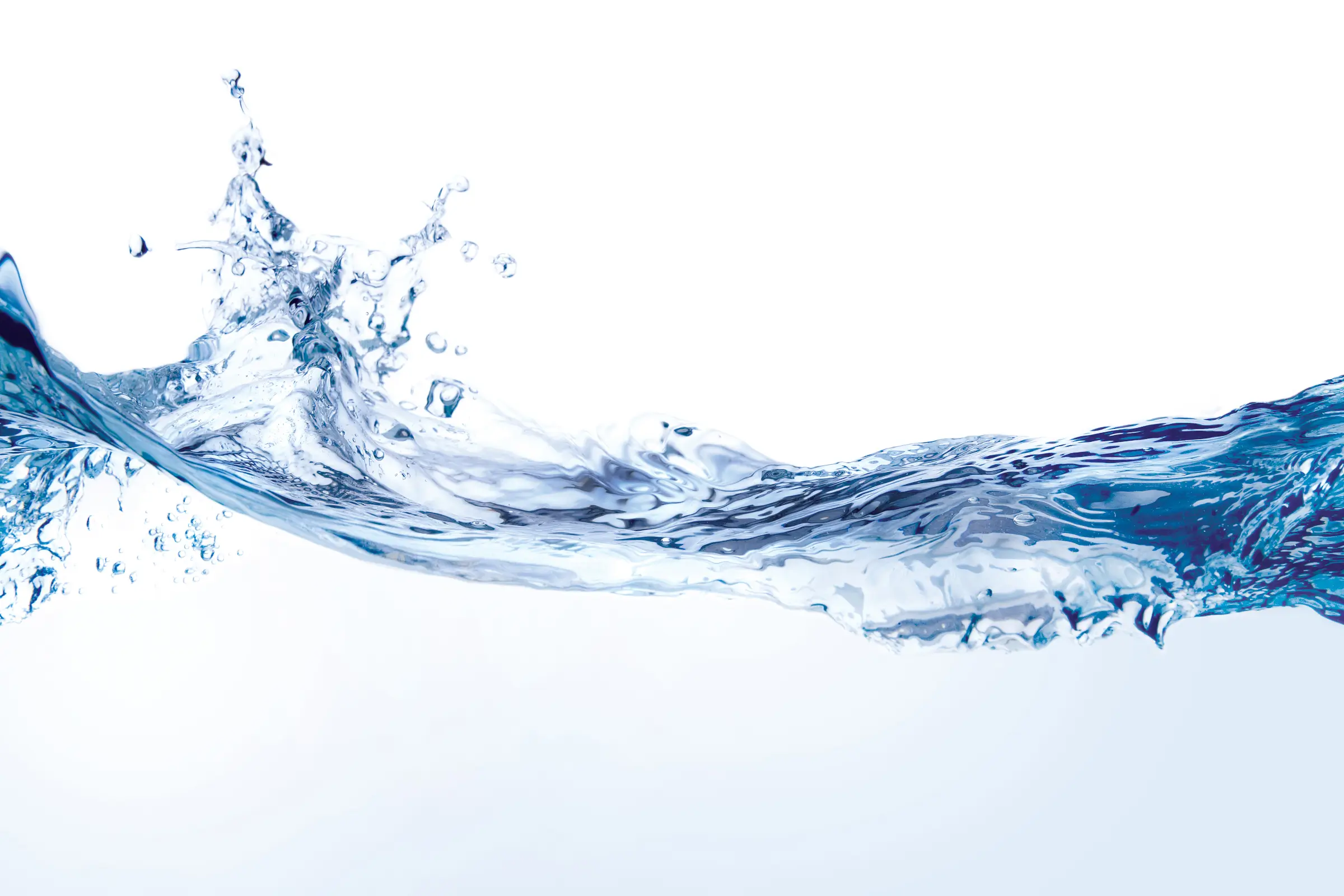Nepal Earthquake | Into the Himalayas
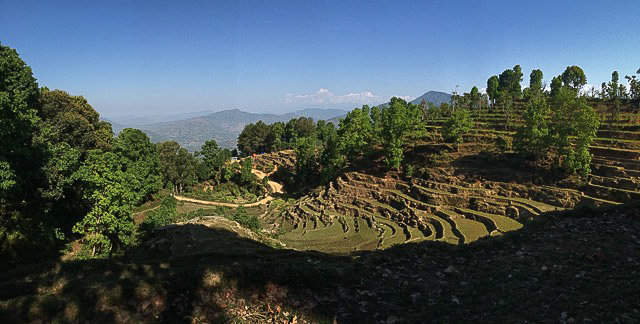 Craig Williams, Water Missions' Logistics Director, is in Nepal following April 25th's devastating earthquake. Senior Technician Tosa Surbakti and Project Engineer Tim Darms have joined him to begin assessing communities' needs as they await Water Missions equipment in transit. Below is the most recent communications we have received from him.
So, where are we at?
I am happy to announce that the tremors and quakes seemed to have died off for now… or at least in the places we have been passing through. But everyone is still on their guard. Yesterday we left Kathmandu (the capital of Nepal) and headed towards Gorkha (where on Saturday they had another quake of 5.5 magnitude and killed 20 people by causing a landslide). Here, our partner on the ground had already identified a few communities in great need. The day started at 5 AM with getting the first coordination messages out and was quickly followed by the breathtaking view of the morning sun highlighting the snow caps of the Himalayan Mountains. Unfortunately this was short lived as we started a six hour hike through the hills to reach communities that lie off the beaten track.
This assessment took us to some of the poorest, most forgotten people of the lower cast (the bottom of the social hierarchy). The pictures below show Tim, Tosa, Madan, myself and our guide Anil as we went through what was a very powerful and highly effective day of assessments, engagements and coordination. By the end of the day decisions had to be made on how to move forward. Tim has stayed behind in Gorkha to strengthen the engagement and partnerships we have started, and to start designing how we can help those that we met today. Whilst Tosa, Maden and I head on to Dhading. This message comes to you from a roadside hotel about an hours drive from Dhading. All in all it has been a heartbreaking, exhausting, but very productive day for the team.
The situation in Gourkha is one of energy and mobilization, but only a few agencies have begun aid distribution and we are finding ourselves to be in a stronger and more ready position then many of them in being able to respond. Although we are waiting for our equipment to get a landing slot in the over crowded airport in Kathmandu we are proactively seeking organizations that have aid for delivery that we can take in for them. Food and shelter is not our main line but because we are functional we do not want to go in empty handed when we do our water assessments. So within a few days we will have a vehicle in Gorkha and aim to make sure that it is filled with food and shelter tarpaulins every time we enter a community.
The first stop was to examine the mountain spring that is being harvested for water distribution to some of the villages we were heading to. It was breathtaking. However, the reality in the villages quickly hit us as we moved through and talked to the people about their situation. Realizing the absence of other aid agencies up to this point, we started to take GPS locations and basic rapid assessment information on the needs in the community that Tim will now feed into the coordination meeting tomorrow morning at 8 AM.
This house below had five families living in it. They fortunately all escaped and are now living in the tents you see at the end of the picture.
Craig Williams, Water Missions' Logistics Director, is in Nepal following April 25th's devastating earthquake. Senior Technician Tosa Surbakti and Project Engineer Tim Darms have joined him to begin assessing communities' needs as they await Water Missions equipment in transit. Below is the most recent communications we have received from him.
So, where are we at?
I am happy to announce that the tremors and quakes seemed to have died off for now… or at least in the places we have been passing through. But everyone is still on their guard. Yesterday we left Kathmandu (the capital of Nepal) and headed towards Gorkha (where on Saturday they had another quake of 5.5 magnitude and killed 20 people by causing a landslide). Here, our partner on the ground had already identified a few communities in great need. The day started at 5 AM with getting the first coordination messages out and was quickly followed by the breathtaking view of the morning sun highlighting the snow caps of the Himalayan Mountains. Unfortunately this was short lived as we started a six hour hike through the hills to reach communities that lie off the beaten track.
This assessment took us to some of the poorest, most forgotten people of the lower cast (the bottom of the social hierarchy). The pictures below show Tim, Tosa, Madan, myself and our guide Anil as we went through what was a very powerful and highly effective day of assessments, engagements and coordination. By the end of the day decisions had to be made on how to move forward. Tim has stayed behind in Gorkha to strengthen the engagement and partnerships we have started, and to start designing how we can help those that we met today. Whilst Tosa, Maden and I head on to Dhading. This message comes to you from a roadside hotel about an hours drive from Dhading. All in all it has been a heartbreaking, exhausting, but very productive day for the team.
The situation in Gourkha is one of energy and mobilization, but only a few agencies have begun aid distribution and we are finding ourselves to be in a stronger and more ready position then many of them in being able to respond. Although we are waiting for our equipment to get a landing slot in the over crowded airport in Kathmandu we are proactively seeking organizations that have aid for delivery that we can take in for them. Food and shelter is not our main line but because we are functional we do not want to go in empty handed when we do our water assessments. So within a few days we will have a vehicle in Gorkha and aim to make sure that it is filled with food and shelter tarpaulins every time we enter a community.
The first stop was to examine the mountain spring that is being harvested for water distribution to some of the villages we were heading to. It was breathtaking. However, the reality in the villages quickly hit us as we moved through and talked to the people about their situation. Realizing the absence of other aid agencies up to this point, we started to take GPS locations and basic rapid assessment information on the needs in the community that Tim will now feed into the coordination meeting tomorrow morning at 8 AM.
This house below had five families living in it. They fortunately all escaped and are now living in the tents you see at the end of the picture.
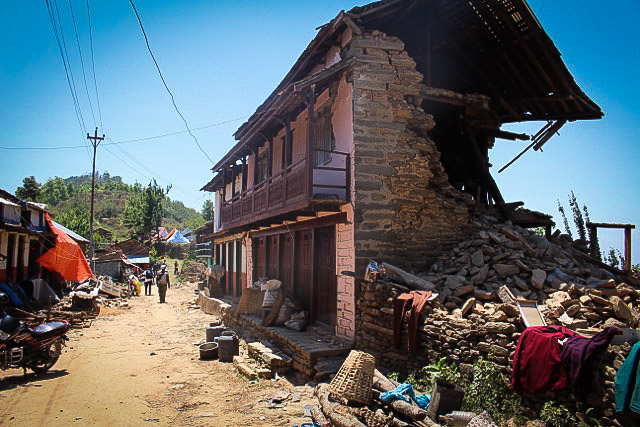 These sobering scenes and heart breaking stories we heard inspired us to push on and learn as much as possible, as fast as possible so we can get ready to take action and make a difference.
These sobering scenes and heart breaking stories we heard inspired us to push on and learn as much as possible, as fast as possible so we can get ready to take action and make a difference.
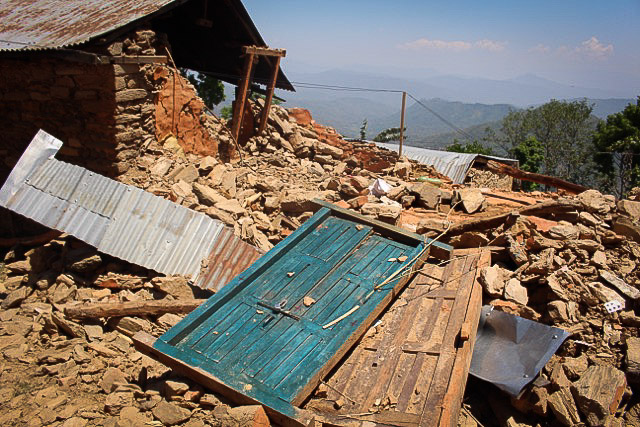
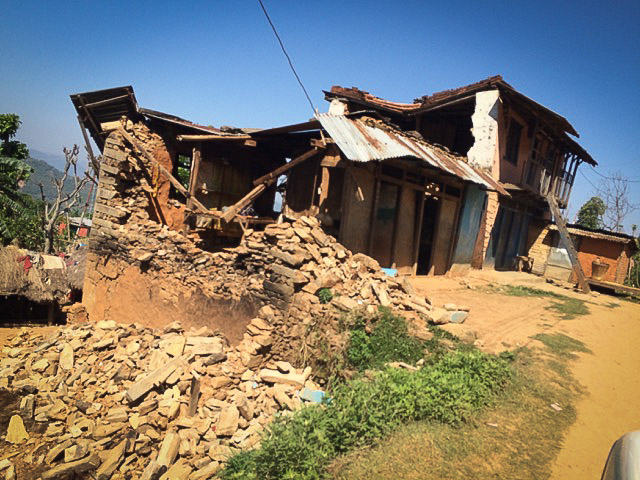 The next two pictures show the poorest village we entered, Pipal Thok. Here the brick, stone and mud houses had almost all but crumbled to the ground. These are simple subsistence farmers mostly without education, and whose worldly possessions are all functional items (basic furniture, pots and pans, tools etc). For the most part these have been lost. Their reserve food supplies to get them through the dry season and until the first crops are harvested is also lost. They find themselves now without food and shelter, and water is unreliable and unsafe to drink, and there are no pots to boil it in.
The next two pictures show the poorest village we entered, Pipal Thok. Here the brick, stone and mud houses had almost all but crumbled to the ground. These are simple subsistence farmers mostly without education, and whose worldly possessions are all functional items (basic furniture, pots and pans, tools etc). For the most part these have been lost. Their reserve food supplies to get them through the dry season and until the first crops are harvested is also lost. They find themselves now without food and shelter, and water is unreliable and unsafe to drink, and there are no pots to boil it in.
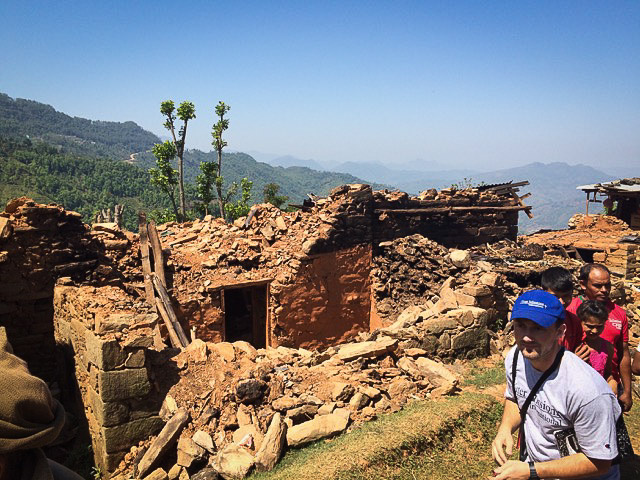 Here Tim is getting the GPS coordinates in the village that he will share in the mornings coordination meeting.
Here Tim is getting the GPS coordinates in the village that he will share in the mornings coordination meeting.
 These two ladies were so excited to see us and invited us into their tent to take a look.
These two ladies were so excited to see us and invited us into their tent to take a look.
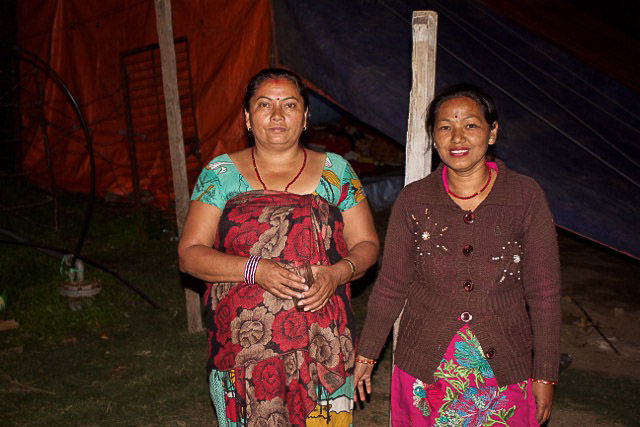 There were around 35 who used this tent. Some of them had totally lost there homes or they were too damaged to return to. These two sisters said their house was fine for now and said they were lucky and for the sake of their kids they will remain in the tents until the earthquakes stop.
There were around 35 who used this tent. Some of them had totally lost there homes or they were too damaged to return to. These two sisters said their house was fine for now and said they were lucky and for the sake of their kids they will remain in the tents until the earthquakes stop.
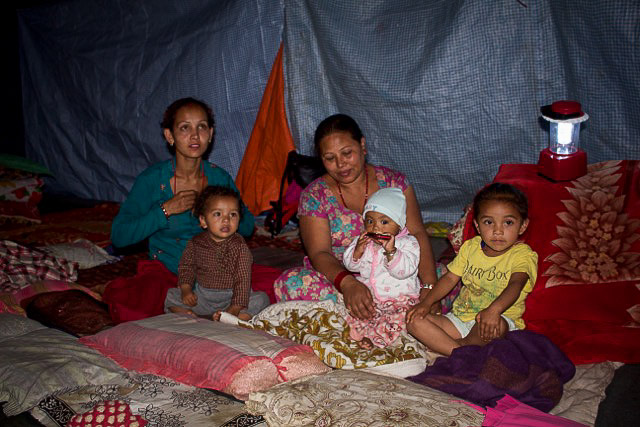 Working late into the night.
Working late into the night.
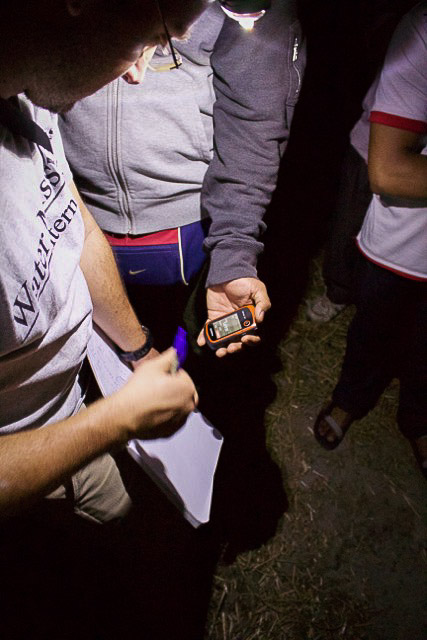 This is a community where there are more than 100 tents. People had either lost their homes or they were no longer safe to enter. We found that these people and many other feeder communities were all fetching water about an hour away. The entire trip would take about two hours to get some water that was neither clean nor safe. But they have no alternative and so they walk. This site at the top of the hill we are looking at is a good sight for a project that will support around a 1000 people, most of which are almost forgotten as people don’t walk beyond the road to find what lies over the hill.
This is a community where there are more than 100 tents. People had either lost their homes or they were no longer safe to enter. We found that these people and many other feeder communities were all fetching water about an hour away. The entire trip would take about two hours to get some water that was neither clean nor safe. But they have no alternative and so they walk. This site at the top of the hill we are looking at is a good sight for a project that will support around a 1000 people, most of which are almost forgotten as people don’t walk beyond the road to find what lies over the hill.
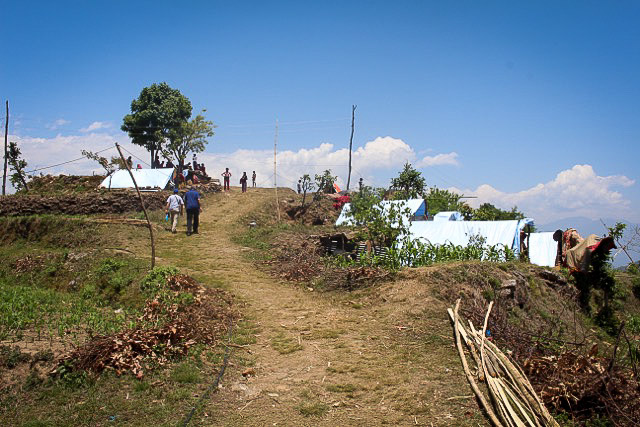 Moving through the communities with all the water test equipment. This house although not destroyed is no longer safe to live in.
Moving through the communities with all the water test equipment. This house although not destroyed is no longer safe to live in.
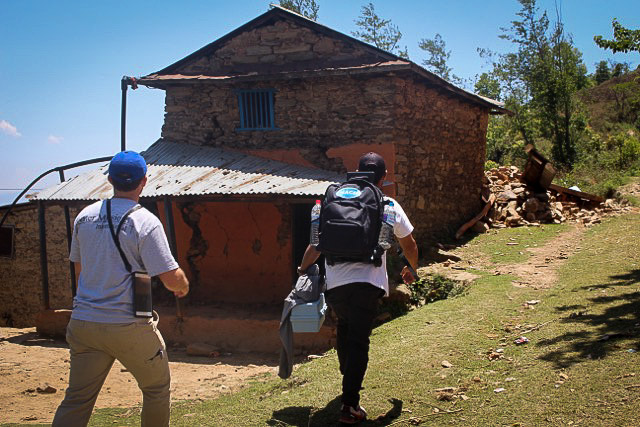 The assessment took us through areas few foreigners get to see. Seeing what we saw and experiencing the expression of peoples emotional impact makes this job difficult and yet at the same time rewarding and I believe it is what drives us harder to increase the size of our impact.
The assessment took us through areas few foreigners get to see. Seeing what we saw and experiencing the expression of peoples emotional impact makes this job difficult and yet at the same time rewarding and I believe it is what drives us harder to increase the size of our impact.
 Yes, there is always time for a few selfies with the kids. Maybe it is because I miss my own kids so much but for me the highlight of every trip is playing with the kids in the villages I have the privilege to encounter.
Yes, there is always time for a few selfies with the kids. Maybe it is because I miss my own kids so much but for me the highlight of every trip is playing with the kids in the villages I have the privilege to encounter.
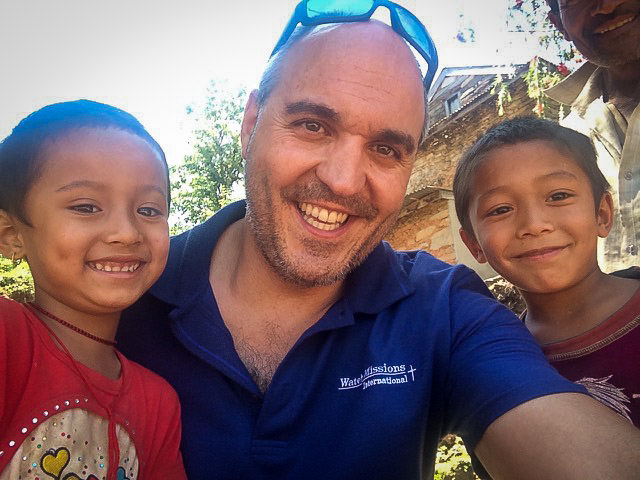 Here we are meeting with the government water authority to introduce ourselves and offer our assistance to them.
Here we are meeting with the government water authority to introduce ourselves and offer our assistance to them.
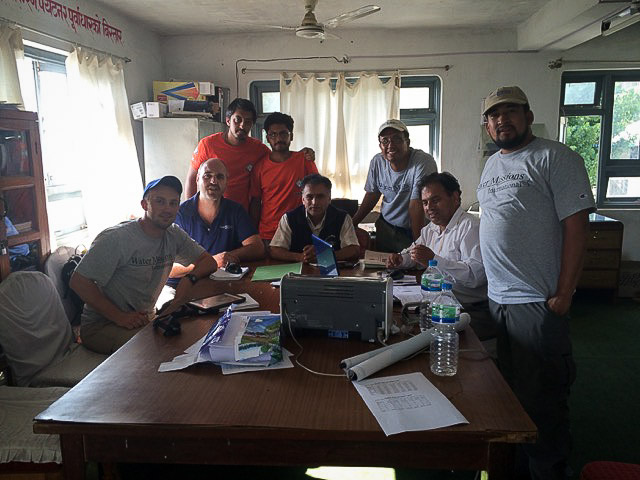 To sum this up. Yes, I am tired, yes I am stressed, but I know everyone else is too. The team now has a strong base from which to respond and are have the energy and drive to do it. There is so much that needs to be done and we are now in a strong position to make a big impact. The difference now between us making a response versus making a great response at this stage will come down to available funding. If we can get more funding, we can get more people and equipment on the ground and spread our impact further. We are ready for it. Water Missions response is not for the next week or one month, if done right it is for the rest of these peoples lives. All for today everyone, I hope these few pictures and words bring you a bit closer to our day as you support from a distance.
- Craig Williams, Logistics/Relationships Director for Water Missions International, currently leading efforts in Nepal.
To sum this up. Yes, I am tired, yes I am stressed, but I know everyone else is too. The team now has a strong base from which to respond and are have the energy and drive to do it. There is so much that needs to be done and we are now in a strong position to make a big impact. The difference now between us making a response versus making a great response at this stage will come down to available funding. If we can get more funding, we can get more people and equipment on the ground and spread our impact further. We are ready for it. Water Missions response is not for the next week or one month, if done right it is for the rest of these peoples lives. All for today everyone, I hope these few pictures and words bring you a bit closer to our day as you support from a distance.
- Craig Williams, Logistics/Relationships Director for Water Missions International, currently leading efforts in Nepal.
Related Impact Stories
